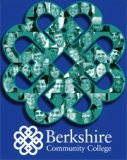TurnItIn has released a new whitepaper about sources for student work. For the study, they have drawn from their extensive database of student papers (112 million content matches from 28 million student papers).
“Key findings include:
- Only just over half of Internet sources in student writing come from legitimate educational resources. 57% of matches come from academic and homework sites, news and portal sites and encyclopedias
- Poor research practices lead students to a significant number of sites that are not authoritative. 43% of matches lead to sites that are academically suspect, including cheat sites and paper mills, shopping sites, and social and user-generated content. More pointedly, 19% of content matches come from paper mills and cheat sites. In looking at the issue of plagiarism, it is safe to assume, at minimum, 19% of matched content comes from sources of academic disrepute.
- Already the most popular student source, reliance on Wikipedia continues strong. Wikipedia remains the most popular source for unoriginal content in student writing.
- Higher education students need further instruction on proper research habits. Educators should incorporate the teaching of proper research habits upfront in order to reduce the number of academically dubious sources that appear in student writing.”
Source: “The Sources in Student Writing – Higher Education,” TurnItIn Whitepaper Sources in Student Writing (HE)
